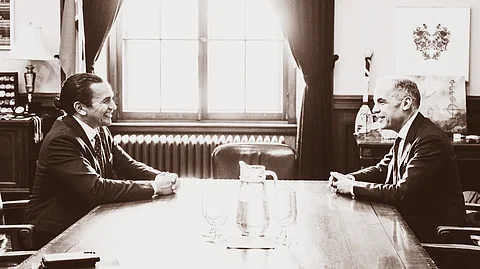

The “Costco of critical minerals.”
That’s how Manitoba Premier Wab Kinew is describing his province to newly-elected Prime Minister Mark Carney as he pushes for a new deepwater port on Hudson’s Bay.
In a letter following the PM’s visit to US president Donald Trump, Kinew urged Carney to move swiftly on establishing a national critical minerals and energy corridor — framing the project as a linchpin for national unity and a test of Carney’s promise to make Canada an “energy superpower” in a rapidly shifting geopolitical landscape.
In the letter, Kinew positioned the corridor not just as a nation-building infrastructure initiative but as a strategic counter to Canada’s growing economic dependence on the United States and the unpredictability of Donald Trump’s “America First” trade agenda.
He argued that the project could help diversify Canadian exports, streamline east-west energy transport, and secure global supply chains for critical minerals needed in green technologies, all while responding to deepening Western alienation.
“Canada’s prosperity should not hinge on the outcome of the next US election,” Kinew wrote, in a clear reference to Trump’s increasingly protectionist rhetoric. “An energy and minerals corridor would allow us to chart our own course, and strengthen national resilience.”
The pitch arrives as independence sentiment simmers again in Alberta and Saskatchewan, where leaders are openly challenging federal energy and climate policy.
In a statement accompanying the letter, Kinew emphasized that the proposed corridor would also serve reconciliation and economic inclusion goals by providing Indigenous communities with a greater role in resource development and long-term benefits.
“This is an opportunity to connect the future of energy with the future of reconciliation,” he said.
Carney, who campaigned on making Canada a global hub for clean energy, critical minerals, and low-carbon technology, has yet to formally respond to Kinew’s request.
Alberta Premier Danielle Smith has promised to hold a provincial referendum on independence— a move reminiscent of Quebec’s failed sovereignty referendums in 1980 and 1995 — claiming Ottawa’s environmental regulations unfairly target her province’s oil and gas sector.
Carney, who hails from Alberta and spent much of his youth in predominantly Indigenous communities in the Far North, including Fort Smith, may share a unique personal rapport with Kinew, Canada’s first First Nations provincial premier.
That shared northern experience could prove pivotal as the two leaders try to navigate the fault lines between federal climate ambitions and regional resource realities.
But with provincial discontent rising and national cohesion under renewed strain, the prime minister may find that his vision of an “energy superpower” will be judged as much by his ability to hold the country together as by his policies on decarbonization.
Or he could choose to carry on with predecessor Justin Trudeau’s now discredited economic agenda that saw massive subsidies flow into Ontario’s EV sector while stifling Western oil and gas with emissions caps and so-called ‘clean electricity’ regulations.
Whether the corridor becomes a legacy project or another casualty of federal-provincial discord may depend on how quickly Carney can turn political alignment into tangible action.
For now, Kinew has placed the ball — or more accurately, the puck — squarely in Ottawa’s defensive zone.
